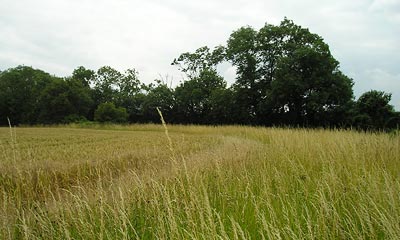Land Economy
The Adam Smith Institute has just produced an excellent article explaining the case for using farmland for housing. They explain that much agricultural land including greenbelt is not green.
It says that there is a “strong case” for the planning system to be abolished and replaced by a free market.
Mischa Balen, the author of Land Economy, said “This is a simple, market-based solution to Britain’s housing problem. As a policy the greenbelt is 60 years out of date and is creating artificial boundaries.”

The article summarises that:
- Planning policy in Britain is out of date. It is overly bureaucratic and too unwieldy to deliver efficient results, it is too prone to politicization, and it serves to protect the countryside at the expense of development.
- London is becoming densely populated to an unsustainable level. Expanding housing around the capital would ease this pressure, and the economic stimulation in other parts of the country which development would bring would also help to create a more sustainable Britain.
- Sympathetic development would create jobs and opportunities in rural areas, and by increasing supply would help to lower house prices, thereby ensuring that everyone can afford to become a stakeholder. At present, the young and low waged find it difficult to afford housing.
- The countryside is not the beautiful and tranquil place it used to be; all too often, it is a monoculture of intensively farmed crops, which harms biodiversity and employs relatively few people.
- Planting woodland in certain areas of the UK would significantly improve biodiversity and would help to regreen England
They go on to explain that:
In Britain, 90% of the population live in urban areas amounting to no more than 8% of total land space.1 At the same time, ecologists and planners tell us that there is simply no room to expand our bursting cities.
The National Housing Federation has argued that in order for planners to meet housing demand, we would need to abandon the green belt. London, (which accounts for 17% of the UK’s GDP), and the Southeast are the areas most desperately in need of new housing.
The existence of the green belt and restrictive planning policies mean that this demand for extra housing in the Southeast cannot be met. With a restricted supply of land but rising demand, prices inevitably rise.
We do not have enough houses, and our present housing developments are inefficient and wasteful. We continue to protect a degraded countryside which benefits comparatively few people in a way that prevents thousands from getting onto the housing ladder.
Green belts are not rich in wildlife; indeed, a more accurate term for them might well be ‘green deserts’. Farming in Britain is pesticide intensive, which limits the number of insects (and, by extension, animals) which can live off green belt land. Green belt land is now simply too toxic to be able to support a variety of creatures. Indeed, Dr Keith Porter of English Nature remarked that lowdensity developments with gardens and public open spaces would provide more favourable habitats for species than the giant pesticide-treated cereal fields that dominate much of the countryside now.
The article is very informative and the summary above does not do it full justice – as such I recommend that you look at the article in full which can be found at (www.adamsmith.org)
Jun 06
